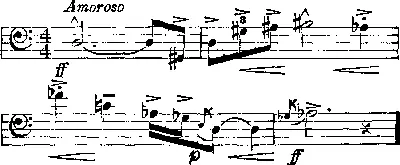George Nathan - The Collected Works of H. L. Mencken
Здесь есть возможность читать онлайн «George Nathan - The Collected Works of H. L. Mencken» — ознакомительный отрывок электронной книги совершенно бесплатно, а после прочтения отрывка купить полную версию. В некоторых случаях можно слушать аудио, скачать через торрент в формате fb2 и присутствует краткое содержание. Жанр: unrecognised, на английском языке. Описание произведения, (предисловие) а так же отзывы посетителей доступны на портале библиотеки ЛибКат.
- Название:The Collected Works of H. L. Mencken
- Автор:
- Жанр:
- Год:неизвестен
- ISBN:нет данных
- Рейтинг книги:4 / 5. Голосов: 1
-
Избранное:Добавить в избранное
- Отзывы:
-
Ваша оценка:
- 80
- 1
- 2
- 3
- 4
- 5
The Collected Works of H. L. Mencken: краткое содержание, описание и аннотация
Предлагаем к чтению аннотацию, описание, краткое содержание или предисловие (зависит от того, что написал сам автор книги «The Collected Works of H. L. Mencken»). Если вы не нашли необходимую информацию о книге — напишите в комментариях, мы постараемся отыскать её.
The Philosophy of Friedrich Nietzsche
A Book of Burlesques
A Book of Prefaces
In Defense of Women
Damn! A Book of Calumny
The American Language
The American Credo
Heliogabalus: A Buffoonery in Three Acts
Ventures Into Verse
The Collected Works of H. L. Mencken — читать онлайн ознакомительный отрывок
Ниже представлен текст книги, разбитый по страницам. Система сохранения места последней прочитанной страницы, позволяет с удобством читать онлайн бесплатно книгу «The Collected Works of H. L. Mencken», без необходимости каждый раз заново искать на чём Вы остановились. Поставьте закладку, и сможете в любой момент перейти на страницу, на которой закончили чтение.
Интервал:
Закладка:

Again silence. Then a single piccolo plays the closing cadence of the composition:

Ruhm und Ewigkeit presents enormous difficulties to the performers, and taxes the generalship of the most skillful conductor. When it was in preparation at the Gewandhaus the first performance was postponed twelve times in order to extend the rehearsals. It was reported in the German papers at the time that ten members of the orchestra, including the first flutist, Ewald Löwenhals, resigned during the rehearsals, and that the intervention of the King of Saxony was necessary to make them reconsider their resignations. One of the second violins, Hugo Zehndaumen, resorted to stimulants in anticipation of the opening performance, and while on his way to the hall was run over by a taxicab. The conductor was Nikisch. A performance at Munich followed, and on May 1, 1913, the work reached Berlin. At the public rehearsal there was a riot led by members of the Bach Gesellschaft, and the hall was stormed by the mounted police. Many arrests were made, and five of the rioters were taken to hospital with serious injuries. The work was put into rehearsal by the Boston Symphony Orchestra in 1914. The rehearsals have been proceeding ever since. A piano transcription for sixteen hands has been published.
Kraus was born at Hamburg on January 14, 1872. At the age of three he performed creditably on the zither, cornet and trombone, and by 1877 he had already appeared in concert at Danzig. His family was very poor, and his early years were full of difficulties. It is said that, at the age of nine, he copied the whole score of Wagner’s Ring , the scores of the nine Beethoven symphonies and the complete works of Mozart. His regular teacher, in those days, was Stadtpfeifer Schmidt, who instructed him in piano and thorough-bass. In 1884, desiring to have lessons in counterpoint from Prof. Kalbsbraten, of Mainz, he walked to that city from Hamburg once a week—a distance for the round trip of 316 miles. In 1887 he went to Berlin and became fourth cornetist of the Philharmonic Orchestra and valet to Dr. Schweinsrippen, the conductor. In Berlin he studied violin and second violin under the Polish virtuoso, Pbyschbrweski, and also had lessons in composition from Wilhelm Geigenheimer, formerly third triangle and assistant librarian at Bayreuth.
His first composition, a march for cornet, violin and piano, was performed on July 18, 1888, at the annual ball of the Arbeiter Liedertafel in Berlin. It attracted little attention, but six months later the young composer made musical Berlin talk about him by producing a composition called Adenoids , for twelve tenors, a cappella , to words by Otto Julius Bierbaum. This was first heard at an open air concert given in the Tiergarten by the Sozialist Liederkranz. It was soon after repeated by the choir of the Gottesgelehrheitsakademie, and Kraus found himself a famous young man. His string quartet in G sharp minor, first played early in 1889 by the quartet led by Prof. Rudolph Wurst, added to his growing celebrity, and when his first tone poem for orchestra, Fuchs, Du Hast die Gans Gestohlen , was done by the Philharmonic in the autumn of 1889, under Dr. Lachschinken, it was hailed with acclaim.
Kraus has since written twelve symphonies (two choral), nine tone-poems, a suite for brass and tympani, a trio for harp, tuba and glockenspiel, ten string quartettes, a serenade for flute and contra-bassoon, four concert overtures, a cornet concerto, and many songs and piano pieces. His best-known work, perhaps, is his symphony in F flat major, in eight movements. But Kraus himself is said to regard this huge work as trivial. His own favorite, according to his biographer, Dr. Linsensuppe, is Ruhm und Ewigkeit , though he is also fond of the tone-poem which immediately preceded it, Rinderbrust und Meerrettig . He has written a choral for sixty trombones, dedicated to Field Marshal von Hindenburg, and is said to be at work on a military mass for four orchestras, seven brass bands and ten choirs, with the usual soloists and clergy. Among his principal works are Der Ewigen Wiederkunft (a ten part fugue for full orchestra), Biergemütlichkeit , his Oberkellner and Uebermensch concert overtures, and his setting (for mixed chorus) of the old German hymn:
Saufst—stirbst!
Saufst net—stirbst a!
Also, saufst!
Kraus is now a resident of Munich, where he conducts the orchestra at the Löwenbräuhaus. He has been married eight times and is at present the fifth husband of Tilly Heintz, the opera singer. He has been decorated by the Kaiser, by the King of Sweden and by the Sultan of Turkey, and is a member of the German Odd Fellows.
III. THE WEDDING. A STAGE DIRECTION
Table of Contents
The scene is a church in an American city of about half a million population, and the time is about eleven o’clock of a fine morning in early spring. The neighborhood is well-to-do, but not quite fashionable. That is to say, most of the families of the vicinage keep two servants (alas, more or less intermittently!), and eat dinner at half-past six, and about one in every four boasts a colored butler (who attends to the fires, washes windows and helps with the sweeping), and a last year’s automobile. The heads of these families are merchandise brokers; jobbers in notions, hardware and drugs; manufacturers of candy, hats, badges, office furniture, blank books, picture frames, wire goods and patent medicines; managers of steamboat lines; district agents of insurance companies; owners of commercial printing offices, and other such business men of substance—and the prosperous lawyers and popular family doctors who keep them out of trouble. In one block live a Congressman and two college professors, one of whom has written an unimportant textbook and got himself into “Who’s Who in America.” In the block above lives a man who once ran for Mayor of the city, and came near being elected.
The wives of these householders wear good clothes and have a liking for a reasonable gayety, but very few of them can pretend to what is vaguely called social standing, and, to do them justice, not many of them waste any time lamenting it. They have, taking one with another, about three children apiece, and are good mothers. A few of them belong to women’s clubs or flirt with the suffragettes, but the majority can get all of the intellectual stimulation they crave in the Ladies’ Home Journal and the Saturday Evening Post, with Vogue added for its fashions. Most of them, deep down in their hearts, suspect their husbands of secret frivolity, and about ten per cent. have the proofs, but it is rare for them to make rows about it, and the divorce rate among them is thus very low. Themselves indifferent cooks, they are unable to teach their servants the art, and so the food they set before their husbands and children is often such as would make a Frenchman cut his throat. But they are diligent housewives otherwise; they see to it that the windows are washed, that no one tracks mud into the hall, that the servants do not waste coal, sugar, soap and gas, and that the family buttons are always sewed on. In religion these estimable wives are pious in habit but somewhat nebulous in faith. That is to say, they regard any person who specifically refuses to go to church as a heathen, but they themselves are by no means regular in attendance, and not one in ten of them could tell you whether transubstantiation is a Roman Catholic or a Dunkard doctrine. About two per cent. have dallied more or less gingerly with Christian Science, their average period of belief being one year.
Читать дальшеИнтервал:
Закладка:
Похожие книги на «The Collected Works of H. L. Mencken»
Представляем Вашему вниманию похожие книги на «The Collected Works of H. L. Mencken» списком для выбора. Мы отобрали схожую по названию и смыслу литературу в надежде предоставить читателям больше вариантов отыскать новые, интересные, ещё непрочитанные произведения.
Обсуждение, отзывы о книге «The Collected Works of H. L. Mencken» и просто собственные мнения читателей. Оставьте ваши комментарии, напишите, что Вы думаете о произведении, его смысле или главных героях. Укажите что конкретно понравилось, а что нет, и почему Вы так считаете.












